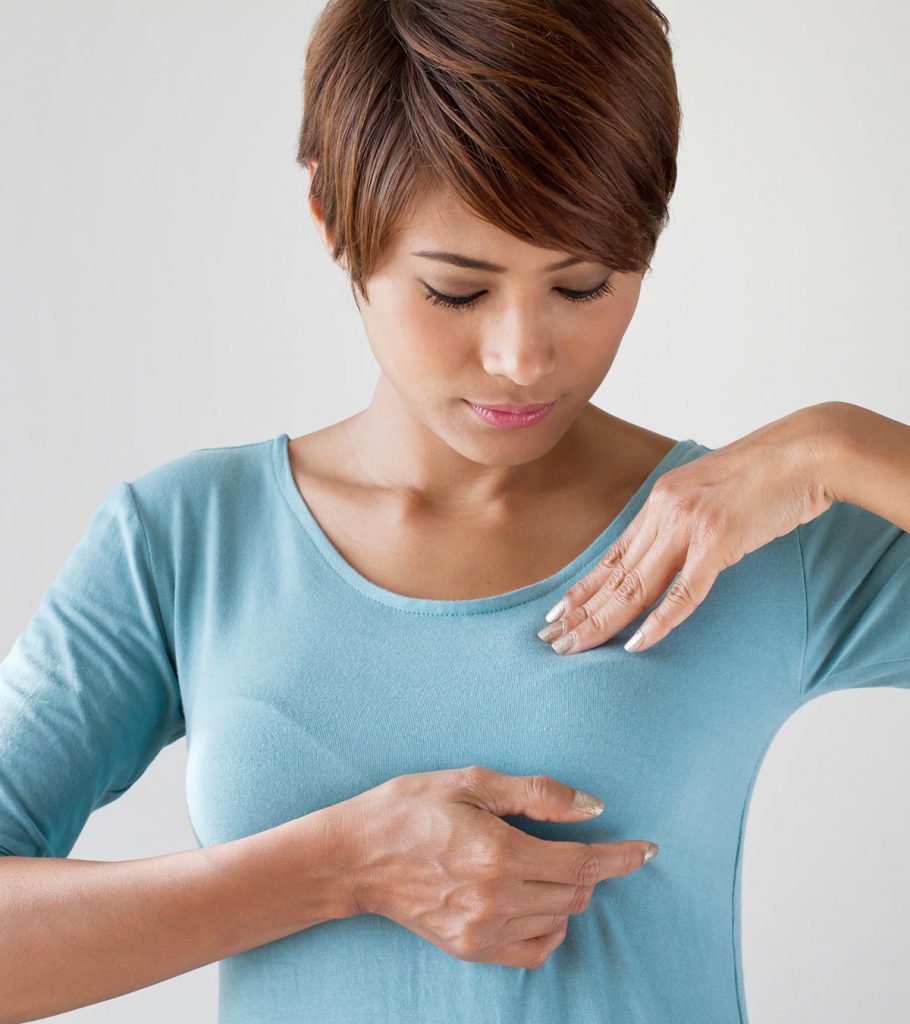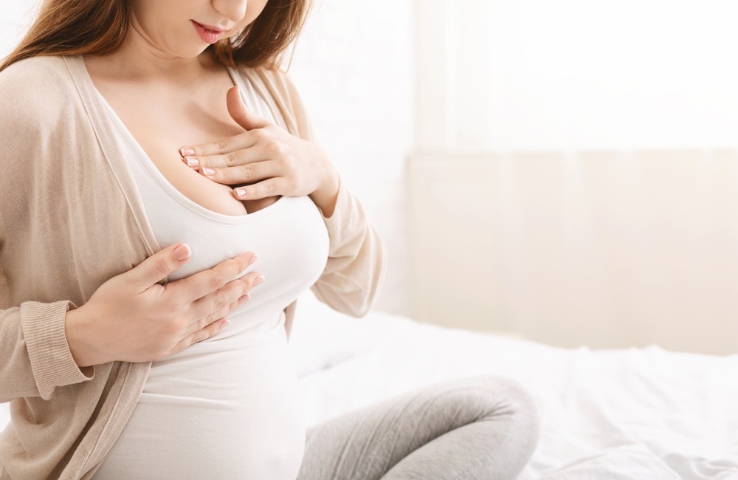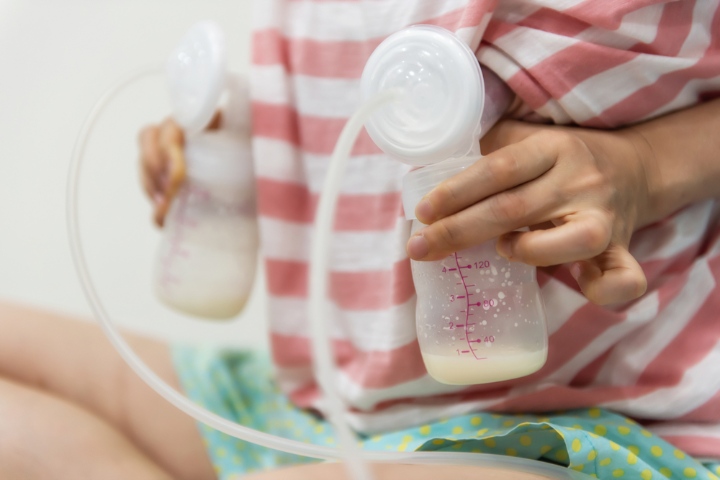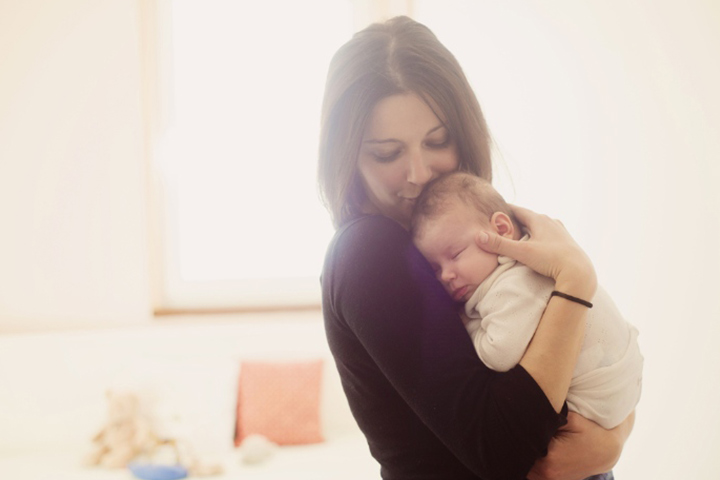If you are currently breastfeeding your baby and notice leaking breast milk, you might wonder as to why it is happening. Breast milk leakage mainly happens due to the overproduction of milk. So much so that it starts to leak out of the breast. This situation might cause mothers to worry about their ability to breastfeed. But this is a common symptom seen in women who produce more milk than what is required by their baby. However, it can be treated easily with the help of certain tips and tricks. Read on to know more about the causes, treatment, and prevention of breast milk leakage.
What Causes Breast Leakage During Lactation?
It is normal for breasts to leak after delivery and during regular breastfeeding. Here are a few reasons why it happens.
- Your breasts are full even before delivery: The breast tissue begins production of colostrumiXThe first breast milk produced by the body after delivery, which has fewer carbohydrates and fats and more proteins than mature milk. during the second trimester, and you may feel fullness in your breasts even before the baby is born (1). So there are chances your breasts may leak immediately after childbirth since they reach their maximum capacity of milk production and storage by then.
- Prolactin causes a rampant increase in breast milk production: After childbirth, there is a drop in ovarian hormones and the pituitary gland hormone called prolactin takes over. This hormone increases the production of breast milk (2). The sharp rise in milk production may cause milk to leak out a little.
- Secretion of oxytocin: Prolactin only stimulates the milk lobules to make milk, but oxytociniXA hormone produced by the hypothalamus, known to induce feelings of well-being and relaxation. causes the milk lobules to contract and release the milk into the milk ducts, thus causing a leak. Oxytocin is produced by the hypothalamusiXA part of the brain that impacts the endocrine system and helps the body create balance and stability., a region of the brain close to the pituitary gland (3).
The hypothalamus takes time to adjust to the production of oxytocin, which leads to random leakage of breast milk during the first few days to a week postpartum.
- Initial gap in demand and supply: You cannot always predict how frequently your baby will feed initially. So, there is bound to be a gap between the feeding demands of the baby and the pace at which your breasts produce the milk. Sometimes, the breasts may produce milk even when your baby is not hungry, resulting in breast milk overflow and leakage (4).
While breast milk leakage is normal after delivery and lactation, it is not permanent and stops eventually.
Following childbirth, breast milk production rapidly increases and continues to rise until it adapts to the baby’s needs. According to the graph below, the average milk yield increases to 600 ml/day during the first eight days after giving birth. However, it is essential to note that the estimated amount of breast milk produced may vary depending on several factors.
Daily milk production values in the first eight days postpartum
Source: Normal Human Lactation: closing the gap; F1000 Research
How Long Does Breast Leakage Last?
Breast milk leakage postpartum and when breastfeeding usually lasts for a week to two weeks (5). It is unlikely that the leakage continues for a month since a couple of weeks is all that is needed to synchronize demand and supply of breast milk. Your body slowly strikes a balance between the baby’s demands and milk production thus regulating the output of hormones accordingly.
While the milk leakage stops eventually, it can be a cause of worry in some situations and warrants a doctor’s attention.
When To See A Doctor For Breast Milk Leakage?
It is good to see a doctor for breast milk leakage in the following situations:
- The milk discharge makes it difficult for you to breastfeed your baby. It is possible that the baby is not getting sufficient milk due to the milk leakage.
- The breasts feel sore, inflamed, and painful most of the time. You experience a burning sensation in the breasts every time there is a discharge from the nipple.
- The nipple discharge is white or contains blood. It could be a sign of mastitis, which is an infection of the milk lobules (6).
- The breasts have a lump and are hard to touch.
- You have a breast implant. In rare cases, the breast implant may rupture within the body and leak its contents in the surrounding tissue (7).
A doctor can review the symptoms and diagnose the condition accordingly. Milk leakage without any of these symptoms is seldom a cause for concern. You can manage the situation at home with some easy measures.
How To Manage And Stop Breast Leakage?
Here is what you can do minimize and control breast leakage (8):
- Maintain a regular nursing pattern: A regular nursing pattern involves feeding at the same time each day to synchronize the baby’s demand with your body’s milk supply. The hormones prolactin and oxytocin are also produced at the right time in the right quantity, which eventually prevents breast leakage.
- Express at fixed timings: If you mostly feed expressed breast milk to your baby, then express milk at fixed time intervals and establish a breast milk pumping schedule to maintain a consistent routine. This will aid in preventing unexpected milk letdowns.
- Use nursing pads: Usage of nursing pads help prevents a mess that could arise due to abrupt leakage of milk from the breasts. You can get washable or disposable breast pads. Disposable pads are ideal when you are traveling and in situations when you cannot wash your nursing pads.
- Wear an absorbent bra: Wear a cotton bra over the breast pads. Cotton can absorb liquids better, which can prevent your clothes from staining due to breast milk leakage.
- Choose darker colors for clothing: A nursing pad and absorbent bra are usually sufficient to prevent breast milk stains from getting onto your clothes. In case of too much leakage, you can consider wearing dark-colored clothes, which can hide the milk stains better.
Leaking breast milk is a common nursing problem that isn’t a cause for concern. In most cases, the problem abates as your baby grows older and the breast milk demand and supply decrease. Even instances where nursing mothers experience leaking breast milk till they stop nursing are normal. However, consult a doctor promptly if the condition makes you uncomfortable or is accompanied by additional issues, such as pain, soreness, or burning sensation. Maintaining a regular breastfeeding schedule, using nursing pads, and wearing absorbent bras are some ways you can minimize or control leaking breast milk.
Key Pointers
- Breast milk leakage happens when the mother produces more milk than her baby needs.
- It’s common after childbirth and can last for one to two weeks.
- Seek medical attention if breastfeeding is difficult or painful, or if there’s any abnormal discharge or lump.
- To control breast leakage, follow a regular nursing pattern, express milk at fixed times, and use nursing pads.
- Breast leakage may occur when the mother stops breastfeeding or combines it with formula feeding from a bottle.















